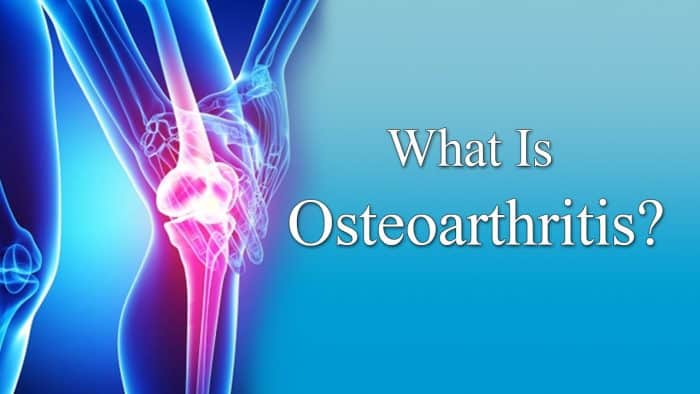
Osteoarthritis (OA) is a degenerative disease that affects major joints like the hip, knees,
shoulders, and hands. It is very common, so much so that you probably know several people who suffer with it.
There are several components of a joint. It is made up of 2 bones coming together and there is a disc (cartilage) on the surface of the bones. This disc acts as a shock absorber so the bones do not directly hit each other. A joint’s job is to absorb and distribute the mechanical load in your body as you move and are upright. There are also ligaments that connect bone to bone, tendons that connect bone to muscle, and muscles surrounding the joint to add stability. OA is due to changes that occur in the cartilage, bone, and can affect the ligaments, tendons, and muscles. This change can result in pain, instability, swelling, weakness, joint stiffness or reduced range of motion. If you have OA you notice you are stiffer in the mornings and it takes anywhere from 5-30 minutes to “loosen” the joint up. You may also notice moving the joint helps reduce pain and stiffness, but moving it too much will increase pain and stiffness. You may also notice joint swelling if the joint is dependent for too long or you do too much activity with that joint. Your joint may also feel unstable when performing regular activities like going down the stairs. You may also notice heating up the joint alleviates some of your discomforts.
What are the risk factors in developing osteoarthritis?
Age, Obesity, Genetics, Previous trauma, Gender (females have a higher incidence), Hormones and metabolic diseases (diabetes) are all risk factors for developing osteoarthritis. But, just because you may have one or two of these risk factors does not mean you will develop OA.
How is osteoarthritis diagnosed:
The diagnosis of osteoarthritis is based on your symptoms and examination findings. Symptoms of osteoarthritis can include; joint swelling, reduced range of motion, morning stiffness lasting under 30 minutes, crepitus (popping or grinding) of the joint, reduced strength, pain with too much movement, pain reducing with movement, as well as stiffness and pain after sitting for prolonged periods. Pain associated with osteoarthritis will usually start intermittently and with activity and progress to having pain or dysfunction constantly and at rest. Imaging like x-rays can also help make a diagnosis of OA. Findings may include; decreased joint space, osteophytes (outgrowth of bone), cyst formation (moist cavity of the bone), and sclerosis (liquefaction) of the bone beneath the cartilage. But, many people can have these findings on imaging and have little to no pain associated with these changes. So if you have no pain or dysfunction do not worry if you get an x-ray of a joint and your doctor tells you that you have OA.
When do I know if I need surgery or a joint replacement?
Not everyone diagnosed with OA will require a joint replacement or surgery. Research suggests that NSAIDS (non-steroidal anti-inflammatory drugs) and exercise have the highest level of evidence for improving knee and hip OA symptoms. If you have spent years taking anti-inflammatories or going to physiotherapy with little relief in pain, quality of life, or dysfunction, surgery may be a good option for you. If you are awaiting a joint replacement, maintaining joint range of motion, strength, and stability helps you recover faster from surgery and avoid injury. A physiotherapist can provide you with an exercise program to maintain all of these things. If you do undergo a joint replacement, going to physiotherapy post surgery is vital to your recovery. Always remember that each individual experiences OA differently, and try not to dwell on another persons experience or what their imaging showed. Listening to your bodies cues such as pain, swelling, and dysfunction are the most important factors that should help you decide course of treatment and interventions. Our physiotherapists at Altea Physiotherapy and Wellness are here to make a customized program that fits best for you and help you along your path of recovery.
Give us a call today to book an assessment or speak with one of our therapists.
